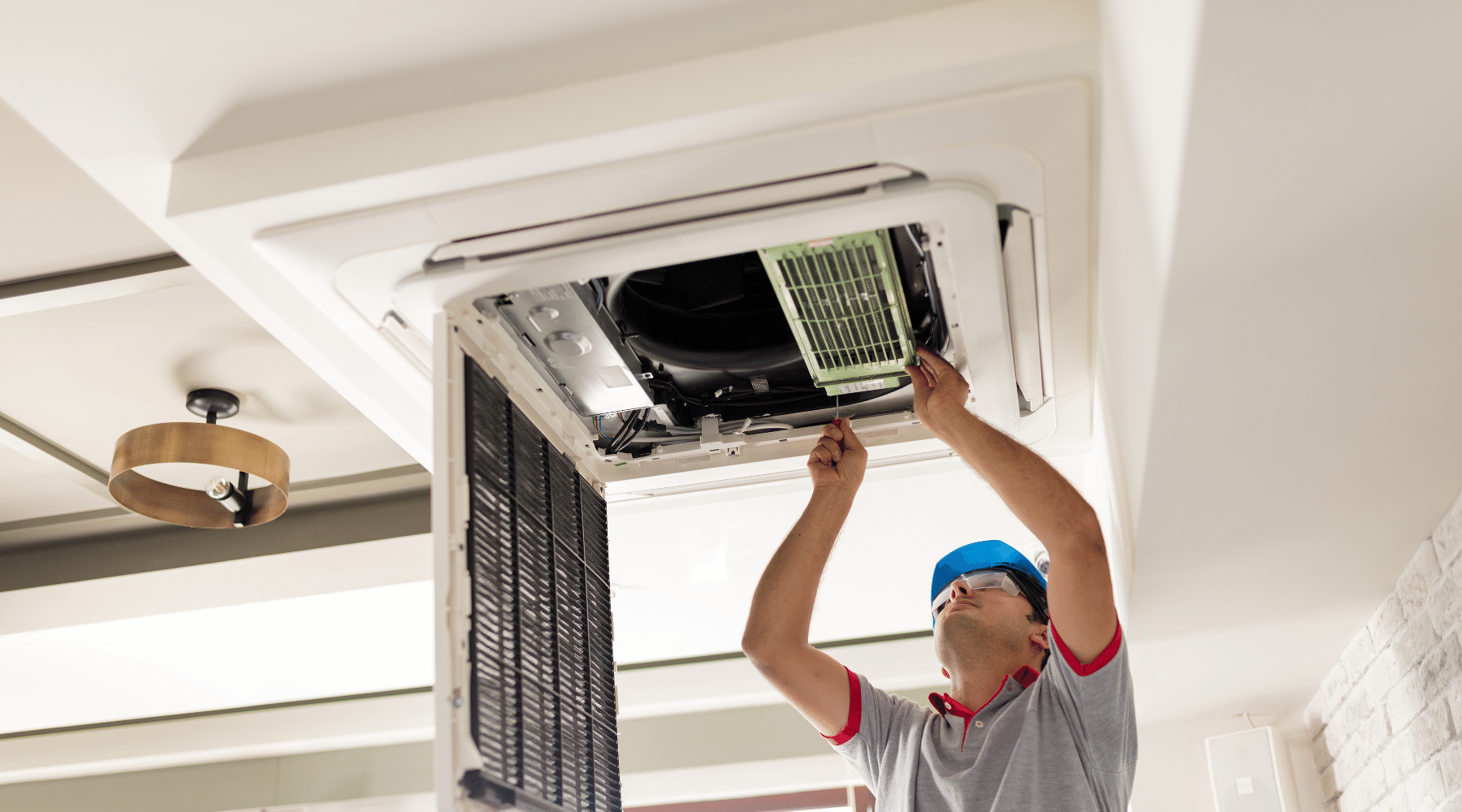
As the temperatures increase, keeping cool is a big priority. Ducted air conditioning is one of the best ways to ensure your home is comfortable in all seasons. This adaptable system can cool or heat your entire home and provides homeowners with many benefits. This guide includes types of ducted air conditioning, installation costs, and other vital considerations.
What is Ducted Air Conditioning?
Ducted air conditioning is a system built to cool or heat your entire home via a series of ducts that carry conditioned air to every room. It has a central unit connected to a series of ducts in your ceiling or floor. Any cooled or heated air then travels through ducts to vents in every room.
Ducted air conditioning has numerous advantages, including temperature regulation in multiple rooms. This makes it perfect for bigger homes or those who want an all-in-one solution to cover every room.
Types of Ducted Air Conditioning Systems
Knowing the different types of ducted air conditioning systems is essential before deciding which is best for your home. Some of the most popular forms are:
Ducted Evaporative Air Conditioning
Ducted evaporative air conditioning is an energy-efficient cooling solution, ideal for dry environments. It functions as follows: air is drawn through water-saturated pads, cooled by evaporation and then distributed through the ducts. It is also more energy-efficient than traditional refrigerant-based systems, which is better for the environment. Reverse cycle air conditioning provides cooling and heating, making it versatile. This system works with the same refrigerant-based process as conventional air conditioning, but it can also reverse the cycling to provide warmth in the colder months. This enables reverse cycle air conditioning to work year-round, helping homeowners stay comfortable, regardless of outside weather.
Benefits of Ducted Air Conditioning
There are several benefits to ducted air conditioning, which is why many homeowners choose ducted air:
- Energy Efficiency: Today’s ducted systems feature energy-efficient designs that keep your home cool or warm without guzzling power. Systems like ducted evaporative air conditioning are extremely energy efficient.
- Whole-House Coverage: A ducted system lets you set the temperature in every room, ensuring consistent comfort throughout your home. It helps improve energy efficiency so that you don’t have to run the AC or the heater in every room at once, and the system can be zoned to cool or heat only certain areas.
- Aesthetically Pleasing: Ducted air conditioning can be more aesthetically appealing than wall-mounted units, as it runs seamlessly throughout your home. Furthermore, the ducts and vents are hidden, giving your home a cleaner yet more streamlined appearance.
- Quiet Operation: Ducted air conditioning operates quietly since the significant unit is typically in a central room (e.g., the roof space), which minimises noise levels throughout your living spaces.
Key Considerations Before Installing Ducted Air Conditioning
So, before you rush into installing ducted air conditioning, there are a few things you need to consider that will impact your choice of system and how it is installed.
1. Home Size and Layout
The type of ducted system to install depends significantly on your home’s size and floor plan. Big homes might demand robust systems, while tiny homes should use a compact solution. Also, the design of your home, including the number of floors or open-plan areas, will impact how the ducts are fitted and how efficiently the system will function.
2. Budgetment.
On the other hand, the makers of ducted evaporative air conditioning mention that this type is very effective in areas with less humidity because humidity in the air will decrease its performance.
Reverse Cycle Air Conditioning
The price of ducted air conditioning can vary widely depending on the machine style, the home’s size and the installation’s complexity. Heating functionality, a reverse cycle air conditioning system, is generally more expensive than ducted evaporative air conditioning. Get several quotes and consider the long-term energy bill savings when deciding.
3. Energy Efficiency Ratings
Energy efficiency will always be a key consideration for any air conditioning system you get if you want to have the most economical operation possible. Choose systems with high energy efficiency ratings, which will help lower your energy consumption over time. One standard option, including a ducted evaporative air conditioning system, typically delivers superior energy efficiency compared to traditional refrigerant-based systems.
4. Installation Process
Ducted air conditioning installation involves a large-scale project that needs a professional do-it-yourselfer. It requires routing ducts through your home, which may include cutting up your existing ceiling or walls. Ensure you use a licensed and experienced installer to ensure a smooth installation process and prevent costly mistakes.
The Installation Process
The installation of ducted air conditioning involves several steps. Here’s an overview of the process:
Step 1: Consultation and Assessment
The consultation begins with a professional installer. During this visit, they will analyse your home, take measurements, and inquire about your heating and cooling needs. They’ll even make it easy for you to decide what system best suits your needs; is it ducted evaporative air conditioning, reverse cycle air conditioning, or something entirely different?
Step 2: Designing the Ductwork
Once you determine the system type, the installer will tailor the ductwork to fit seamlessly within your home. Depending on your home design, the ducts are installed under the ceiling or the floor. Properly designed ductwork assures adequate air flow and system performance.
Step 3: Installing the Unit
Next is the air conditioning system’s central unit, which is typically installed in the roof space or another centralised location. The installer will also ensure the unit is well fitted and connected to the ducts.
Step 4: Testing and Calibration
After installation, it is tested and calibrated to ensure correct operation. This involves checking the temperature settings for accuracy, determining whether the airflow is running correctly, and adjusting it so everything works efficiently.
Maintenance and Care
Regular maintenance is crucial to keeping your ducted air conditioning system working efficiently for years. This means cleaning the filters, checking refrigerant levels, and clearing the ducts. We recommend professional servicing at least every 12 months to ensure everything is kept in top condition.
Conclusion
Lastly, ducted air conditioning installation will benefit you and provide comfort for all seasons. The right solution can transform your home from uncomfortable to pleasant, be it ducted evaporative air conditioning, to save on winters and is endurable through all seasons, or reverse cycle air conditioning, to make it easier to pass your days in the climate without sweating it out. Don’t forget to consider take-home size, budget, and energy efficiency when deciding, and work with a licensed professional for a seamless installation process. With proper care and maintenance, your ducted air conditioning will provide you with years of comfort.




More Stories
2026 Interior Design Forecast: Black Pebble Designs Predicts Mangalore’s Trending Styles
Fence Company Martin County: Blending Security, Style, and Durability
Affordable Fence Height and Style Choices for Maximum Privacy